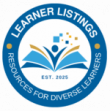The term “diverse learner” is increasingly central to discussions about modern education. It represents a fundamental shift in understanding and addressing each student’s unique needs and strengths in the classroom.
Defining the Diverse Learner
The term “diverse learners” acknowledges that every student is an individual with unique experiences, abilities, and ways of processing information. It is a broad term encompassing various characteristics, including:
- Background and Experiences: This can include a student’s race, ethnicity, socioeconomic status, cultural background, religion, notes Breakout EDU points out, and home life.
- Learning Styles: Students may prefer to learn visually, auditorily, kinesthetically (through hands-on activities), or through reading and writing.
- Cognitive and Physical Abilities: This includes students with disabilities, those who are gifted or high-achieving, and varying levels of cognitive development.
- Language and Communication: English language learners and students with different dialects are also considered diverse learners.
- Social and Emotional Development: Students’ social skills, self-esteem, motivation, and the ways they interact with others can significantly impact their learning experience.
Importance of Recognizing Diverse Learners
Moving beyond a “one-size-fits-all” teaching approach to one that embraces diversity offers numerous benefits for students and educators:
- Enhanced Learning and Achievement: Tailoring lessons to accommodate varying needs helps bridge learning gaps and allows students to access and process information in ways that resonate with them. Research indicates that students in diverse learning environments often achieve higher academic results.
- Improved Cognitive Skills and Critical Thinking: Exposure to diverse viewpoints and backgrounds encourages students to think critically, challenge assumptions, and approach problems from multiple angles. This prepares them for a complex and diverse world beyond the classroom.
- Greater Empathy and Social Awareness: Learning with and about individuals from different backgrounds fosters empathy, reduces prejudice, and promotes cultural understanding.
- Boosted Confidence and Self-Efficacy: When students feel understood, supported, and included in the learning process, their confidence and motivation to succeed can increase significantly.
- Preparation for a Diverse Workforce and Global Citizenship: A diverse learning environment helps students develop the skills and understanding needed to collaborate effectively with people from different cultures and social groups, essential for success in an increasingly interconnected world.
Creating Inclusive Learning Environments
Supporting diverse learners effectively requires a proactive and thoughtful approach from educators. This includes:
- Differentiated Instruction: Adapting content, processes, and assessments to meet individual student needs.
- Culturally Responsive Teaching: Incorporating students’ cultural backgrounds into the curriculum and creating a learning environment that respects and values diversity.
- Building Strong Relationships: Getting to know students as individuals, showing genuine interest in their backgrounds and experiences, and fostering a sense of community within the classroom.
- Utilizing Technology and Adaptive Learning Tools: Leveraging digital resources, adaptive learning platforms, and other tools to create personalized and engaging learning experiences.
- Encouraging Collaboration and Peer Support: Creating opportunities for students to work together, learn from each other’s strengths, and engage in respectful discourse.
By understanding and embracing the concept of the diverse learner, richer, more engaging, and more equitable learning experiences can be created for all students, preparing them to thrive in a complex and ever-changing world.

